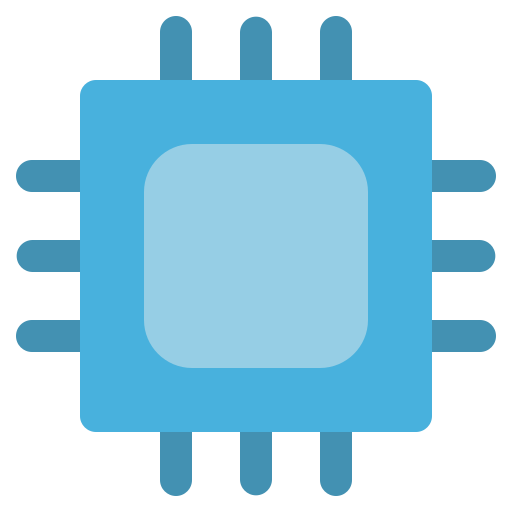

Is there a reason for using a ball-based mouse? Or are you focused on retro aesthetics (which is fine)?
That there is no perfect defense. There is no protection. Being alive means being exposed; it’s the nature of life to be hazardous—it’s the stuff of living.


Is there a reason for using a ball-based mouse? Or are you focused on retro aesthetics (which is fine)?


I can and do currently use F-Droid. But with Google’s changes, I believe it won’t matter which brand you use, you won’t be able to use F-Droid.
This is massive issue for me as I tend to use open source alternatives for most common apps (PDF/document viewer, YT client, 2FA, health tracking, text editor and so on…).
Samsung phones, arguably the most popular Android phone by a large margin comes with LOTS of bloatware that cannot be disabled and they won’t backtrack on that
I could be wrong on this, but at least my A73 doesn’t really have that much bloatware that cannot be disabled.
I don’t have any allegiance to Samsung or Nothing or anything company.
I use Samsung for the family (we all have the same custom launcher) because I am comfortable with their settings and we have an actual Samsung retail/repair location nearby. The A series are also relatively cheap and at least in our country, we don’t have ads.
Nothing implementing adware and spyware is big black mark for them (IMO).


Let’s hope for the best, without dark ages, and who knows, perhaps we have novel tools too.
One example would be: Trans-Siberian Railway (1904)
Took 13 years to build.


Thanks.
Can’t say I agree though. I can’t think of any historical examples where a positive agenda in of itself made a difference.
One example would be industrialization at the end of the 19th century and the first part of the 20th century. One could argue it was far more disruptive of pre-industrial society (railroads, telegraph, radio, mass production) than the information age is now.
Clearly industrialization enabled mass benefits in society, but it took WW1/WW2 and the rise of uncompromising, brutal revolutionary regimes for societies to come to terms with pros and cons of industrial society and find a middle path of sorts (until the next disruption).
Let’s hope it doesn’t get to that point in our times. That being said, the current oligarch regime comes off as even more self assured than the beneficiaries of early industrial society (gilded age oligarch in the US, Romanov dynasty in Tsarist russia).
The current batch of oligarchs has the benefit of hindsight and yet they is no end to their hubris with Bezos talking about millions living in space and comically stupid projects like data centres in orbit and The Simpsons-style “block the sun” schemes to address climate change.


Only option is to not use Americans products and services.
America cannot be trusted. At the end of the day the current US administration is a mere symptom, not the root cause.
As another poster mentioned, there is far more similarity between Obama and Trump than most Americans would like to admit.
No disrespect to sane Americans. It is a disaster for global democracy that America has de facto transitioned to a chauvinistic oligarchy.


So yes, we need a positive vision for AI so we can deal with these problems
I am genuinely curious why you think we need a positive vision for AI.
I say this as someone who regularly uses LLMs for work (more as a supplement to web searching) and uses “AI” in other areas as well (low resolution video upscaling). There are also many other very interesting use cases (often specialized) that tend to be less publicized than LLM related stuff.
I still don’t see why we need a positive vision for AI.
From my perspective, “AI” is a tool, it’s not inherently positive or negative. But as things stand right now, the industry is dominated by oligarchs and conmen types (although they of course don’t have a monopoly in this area). But since we don’t really have a way to reign in the oligarchs (i.e. make them take responsibility for their actions), the discussion around positive vision almost seems irrelevant. Let’s say we do have a positive vision for AI (I am not even necessarily opposed to such a vision), but my question would be, so what?
Perhaps we are just talking about different things. :)
P.S. FWIW, I read your replies in this thread.


There goes my plan for building a new AM5/Zen 6 based desktop next year.
Hehe, all good.
I was wondering why your CPU is at 100% and if you are actually using using your integrated graphics to play the video.
I am speculating whether you even need to buy a GPU, perhaps it is possible to enable your player to explicitly use integrated graphics to play video content.
Maybe check the player settings, something about hardware acceleration settings.
Hopefully, that makes a bit more sense. :)
What content (codec, resolution) are you working with? The iGPU should support x264/Xvid hardware acceleration.
Can you validate that hardware acceleration is working?
I am assuming the CPU is going to struggle with 1080p x265 (let alone AV1), so if you have x265 countent, you’ll need a cheap, somewhat recent dGPU.


While that’s true, but moving from the current 50k MAUs to say 250k would probably have a radical effect on more niche communities and allow for more posters on mid-sized communities.


I am probably going to have to move off Android soon (iOS is not an option, as it’s also run by corrupt American oligarchs).
F-Droid not working is unacceptable for me. Most commercial apps are complete trash and should be banned from any normal app store.
Worst comes to worst, I will have to carry two phones, a locked down Android for banking and work apps and a libre phone for personal use.
Nothing is just as bad as all other OEMs as we can see from this incident.


That’s a fair point. I am just sharing my interpretation.
From the first time watching the movie in 2006 to a recent re-watch, I always got the impression that the eugenics piece was never meant to be taken seriously (or literally). If anything both parties were made to look rather silly in the intro (in their own way). Felt like more of a story setup.
There were definitely many critiques of US corporate culture (I was living in the US around that time after living in Europe and Asia) and the complacency of US society. The TV commercials/shows/ads, the Fox news show, the overboard consumerism, costco university, the Brawndo slogan. It made all of them look bad and stupid.
One could argue that an average guy solving all the worlds problems while the corporate types failed is a damning take on oligarchy.
The director, Mike Judge, didn’t emphasize the more sociopathic and dark elements of oligarchy, but the movie was meant to be a comedy.


Google, Apple, Meta it’s all the same to me. I don’t do fandom for oligarch conglomerates. I am not from North America.
In reality, I think you’re being deliberately obtuse because you want to defend Google’s business practices for some reason. You’re conflating the way Google collects sensitive user information for the purpose of advertising in every single one of its products, including from non-Google apps and webpages with some technicality around verbiage in a privacy policy, which you have not even cited yourself.
All right, all right! It’s all a big conspiracy to protect Alphabet and discredit poor little Tim Apple.
You got me partner. It’s all technicality in their privacy policy!


Some of the people in the society portrayed in the Minority Report movie seemed to be doing fine, but it was clear that a lot of people were also living in rather miserable conditions. Not to mention the brutal security services that reminded me of russia.
It’s been a while since I read the novella, but I vividly remember Spielberg’s adaption having a society that was much more flashy and sanitized. The world in the novella was a nihilistic, proto-cyberpunk world with 50s pulp space scifi motifs.


So have you or have you not read the Apple privacy policy?
Where did I say Apple has a search engine? I said Apple tracks and logs your searches.


At the end of the day it was a comedy. Sometimes subtly is a virtue.
It’s pretty clear that the movie satirizes and critiques the corporate world.


At the very least, he deserves several decades as a junior janitor in the Bhasan Char refugee camp (with full asset seizure) for his contribution to the Rohingya genocide. A similar rehabilitation approach should be applied to multiple other Meta executives as well and the whole board of Meta.
And when I say “asset seizure”, I mean every last cent, with all family members and business partners being forced to sign affidavits agreeing that should any assets be found and there is reason to believe they were involved, they’ll have to partake in the same rehabilitation program as Zuckerberg (including affidavits for their family members and business).
It’s a scalable and efficient approach to justice.


I am just curious, have you ever read Apple’s privacy policy?
What makes you think they don’t log your searches?


I guess it reminds me of the random snippets from newspaper articles and caricatures (from the relevant period) when I was studying 20th century European history in early high school.
It’s seems to succinctly communicate major developments of our time. A Chinese phone (#3 globally by shipments) leveraging world class Korean components, Xi making an ironic statement about digital privacy both in context of China and democratic-leaning countries.
I am probably overthinking. :)
Because well written dystopian sci-fi is based on real human flaws (but projected into a speculative future).
I think the article is giving the oligarchs/criminals too much credit.